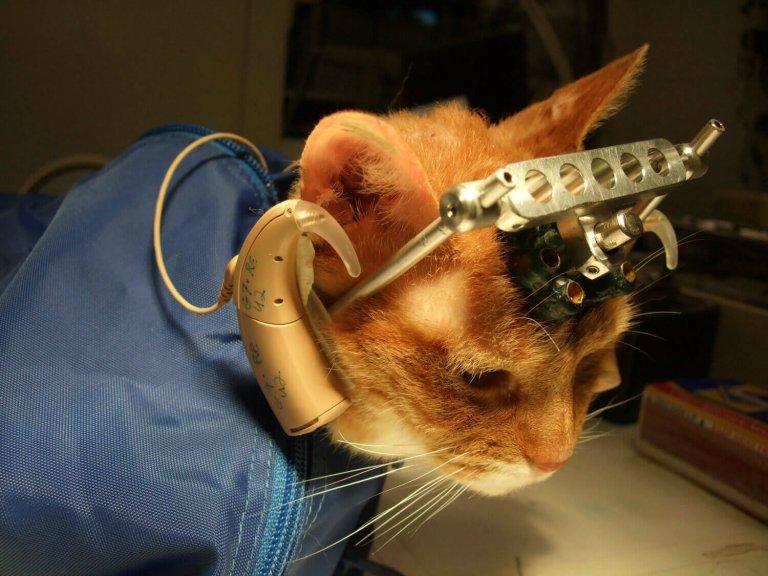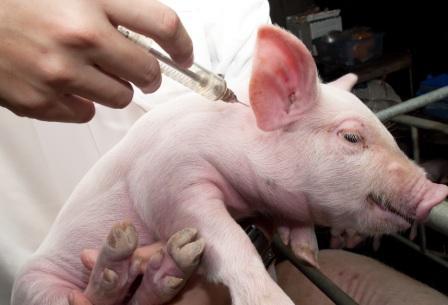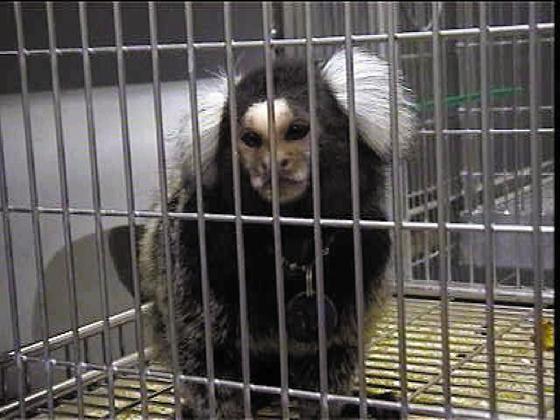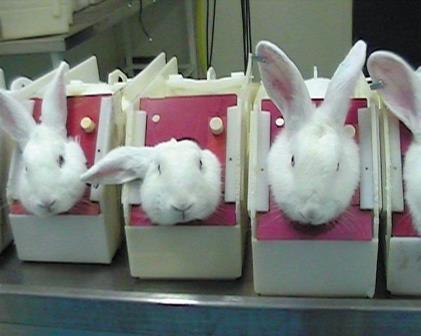Imagine living your entire existence locked in a small cage where fingers and needles prod you every day. You might be starved or have your tail cut off, maybe you’re placed in solitary confinement away your mother, and your only source of comfort is a wire creature made to slightly resemble her.
Is this any way to exist?
According to PETA (People for the Ethical Treatment of Animals), every year in the United States alone, over 100 million animals are used for testing, often resulting in a slow and painful death. All of those terrifying side effects listed on a bottle of medicine or spoken quickly at the end of a TV commercial, those probably happened to an animal.
In this article, we’ll learn what animal testing is and if there are alternatives options for a more ethical and sustainable world. Keep reading to see what you can do to save animals.

What is animal testing?
As defined by Cruelty Free International, animal testing is “any scientific experiment or test in which a live animal is forced to undergo something that is likely to cause them pain, suffering, distress or lasting harm.” For the sake of this article, we’re also going to include animals that are slaughtered specifically for the purpose of dissection as well as those used in laboratories.
When reading this definition, what might come to mind is a scenario similar to a vet visit. But animal testing is very different from taking a companion animal to see a doctor. Animals that are tested on are purposefully harmed in the name of research. This research extends beyond the hard sciences like medicine or testing cosmetics effects. There is also a great deal of research in the psychology field that relies on the manipulation and mental harm of animals, specifically monkeys.


Here are some examples of what living creatures who feel pain, just like you or me, experience during their lives in laboratories or classrooms:
- Corrosives dripped into sensitive eyes
- Arthritis-like pain is created to test the success of painkillers
- Dogs are force-fed pesticides
- Mothers and babies are separated immediately after birth
- Body parts are removed to intentionally cause harm
- Exposure to radiation
- Inhalation of toxic gases
- Force-feeding or inhalation of cosmetics
- Electric shocks
- Eyes sewn shut at birth

What animals are used in animal testing?
In the United States, amphibians (frogs, salamanders, etc.), fish, birds, mice, and rats are not defined as animals under animal experimentation guidelines, and thus researchers don’t need explicit permission to test on these living, breathing, pain-feeling beings. That’s not to say that animals like dogs, cats, pigs, and monkeys are safe, it just means that mice and rats are often tested on first to see a drug or a cosmetic’s effects, before moving onto larger animals that are considered more “human-like” creatures.
Is animal testing necessary and what are the alternatives?
Animals aren’t humans and so what happens to an animal during a test, isn’t necessarily the same thing that would happen to a human.
According to Dr. Elias Zerhouni, former director of the U.S. National Institute of Health, “We have moved away from studying human disease in humans. … The problem is that [animal testing] hasn’t worked, and it’s time we stopped dancing around the problem. … We need to refocus and adapt new methodologies for use in humans to understand disease biology in humans.”

Animal testing isn’t a cheap affair. When using larger animals that are more comparable to humans, the upkeep for food and housing is enormous, and even then, researchers can’t guarantee that the test results will create similar effects in humans.
There are many alternatives available for animal testing and as the movement for animal rights grows, these alternatives are being rapidly developed.
- Test tube testing – There has been some success with in vitro testing that conducts certain biochemical or cell-based tests without any animals.
- Computer programs – With the quick advancements of technology, programs are being developed that can simulate the results that would be received from a body (both animal and human).
- Human-Patient Simulators – Highly advanced technology has permitted the creation of incredibly lifelike human patients for students to train on.
What percentage of animal tests fail?
Evidence suggests that “the collective harms and costs to humans from animal experimentation outweigh potential benefits and that resources would be better invested in developing human-based testing methods.” In 2004, the FDA (Food and Drug Administration) estimated that 92 percent of trials that pass the preclinical stage (animal testing stage) fail to proceed to the market.
What does all this mean?
Animal experimentation for the purpose of products and drugs used by humans is costly and unreliable when compared to newer and more ethical alternatives we have available today. Of the trials that pass the animal testing stage, 92 percent of these do not go to market. That’s thousands if not millions of animals harmed and murdered for absolutely nothing.
Is there a difference between cruelty-free and not tested on animals?
One of the first things to realize when purchasing cruelty-free products is that just because it’s labeled as “cruelty-free,” states that it hasn’t been tested by animals, or has the Leaping Bunny certificate, the individual ingredients might still have been tested on animals even though the finished product was not.
Because there is currently no legal definition for “cruelty-free” or “not tested on animals,” there’s very little regulation on what is actually an ethically produced product or what the difference is between the two terms.
We recommend using PETA’s Cruelty-Free Database to find cruelty-free and vegan brands.

How many animals die from animal testing for cosmetics?
Every year nearly half a million animals are tested on, just for cosmetics! And using animals to test cosmetic safety doesn’t just mean a little blush or foundation is applied to shaved skin. It means that animals (and pregnant animals) are force-fed the product and then killed to determine if there were any negative effects.
How can we stop this now?
The number one way to stop animal testing is to stop buying from brands that support it. When the demand decreases, brands will change their ways to appeal to consumers.
Be outspoken! Let your favorite brands know that you will no longer be purchasing their products unless they commit to creating cruelty-free (this means vegan and not tested on animals) products.
Go vegan! If you’re against animal testing, you probably don’t want to see any animals harmed. Your diet makes a big statement. If you stop eating animals and consuming/using their byproducts (milk, cheese, butter, etc.) you’re making the biggest statement possible.

